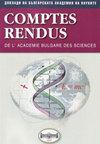Deep Learning-based Precision Diagnosis of Lung Diseases on the Internet of Medical Things (IoMT)
IF 0.3
4区 综合性期刊
Q4 MULTIDISCIPLINARY SCIENCES
Comptes Rendus De L Academie Bulgare Des Sciences
Pub Date : 2023-10-31
DOI:10.7546/crabs.2023.10.07
引用次数: 0
Abstract
Lung disease is one of the common and severe pathological conditions that affect the respiratory system, causing respiratory illness and potential mortality. In recent times, deep learning paradigm based on the Internet of Medical Things (IoMT) platform has been adopted as a viable solution to address the challenges encountered in detection of lung diseases which are characterized by their diverse nature and the complexities associated with their diagnosis. In this work, we have proposed an approach that aims to achieve accurate prediction and analysis of lung diseases. The proposed research methodology presents a Deep Learning-based Accurate Lung Disease Prediction (DL-ALDP) model based on deep learning algorithms to enhance its predictive capabilities. The DL-ALDP framework integrates several preprocessing techniques, including Wiener filtering, optimized region growing method (ORGM)-based feature extraction, and Contrast limited AHE (CLAHE)-based segmentation. The accurate prediction of lung diseases is achieved by utilizing a Deep Neural Network (DNN) for classification purposes. The DL-ALDP technique, as suggested, attained a precision of 86.77%, sensitivity of 82.47%, specificity of 92.87%, accuracy of 92.08%, and F1 score of 89.42%. The findings of this research underscore the prospective utility of deep learning techniques in forecasting and analyzing lung ailments within the context of the IoMT platform. Through IoMT capabilities, healthcare practitioners can avail themselves of enhanced prognostic accuracy and timeliness, resulting in superior patient care and outcomes.基于医疗物联网(IoMT)的深度学习肺部疾病精准诊断
肺部疾病是影响呼吸系统的常见和严重的病理疾病之一,可引起呼吸系统疾病和潜在的死亡。近年来,基于医疗物联网(IoMT)平台的深度学习范式已被采用为解决肺部疾病检测中遇到的挑战的可行解决方案,其特点是其多样性和诊断的复杂性。在这项工作中,我们提出了一种旨在实现肺部疾病准确预测和分析的方法。提出了一种基于深度学习算法的基于深度学习的肺部疾病准确预测(DL-ALDP)模型,以提高其预测能力。DL-ALDP框架集成了多种预处理技术,包括维纳滤波、基于优化区域增长方法(ORGM)的特征提取和基于对比度限制AHE (CLAHE)的分割。利用深度神经网络(DNN)进行分类,实现了对肺部疾病的准确预测。DL-ALDP技术精密度为86.77%,灵敏度为82.47%,特异度为92.87%,准确度为92.08%,F1评分为89.42%。这项研究的结果强调了在IoMT平台的背景下,深度学习技术在预测和分析肺部疾病方面的潜在效用。通过IoMT功能,医疗保健从业者可以提高预后的准确性和及时性,从而获得更好的患者护理和结果。
本文章由计算机程序翻译,如有差异,请以英文原文为准。
求助全文
约1分钟内获得全文
求助全文
来源期刊
CiteScore
0.60
自引率
33.30%
发文量
181
审稿时长
3-6 weeks
期刊介绍:
Founded in 1948 by academician Georgy Nadjakov, "Comptes rendus de l’Académie bulgare des Sciences" is also known as "Доклади на БАН","Доклады Болгарской академии наук" and "Proceeding of the Bulgarian Academy of Sciences".
If applicable, the name of the journal should be abbreviated as follows: C. R. Acad. Bulg. Sci. (according to ISO)

 求助内容:
求助内容: 应助结果提醒方式:
应助结果提醒方式:


